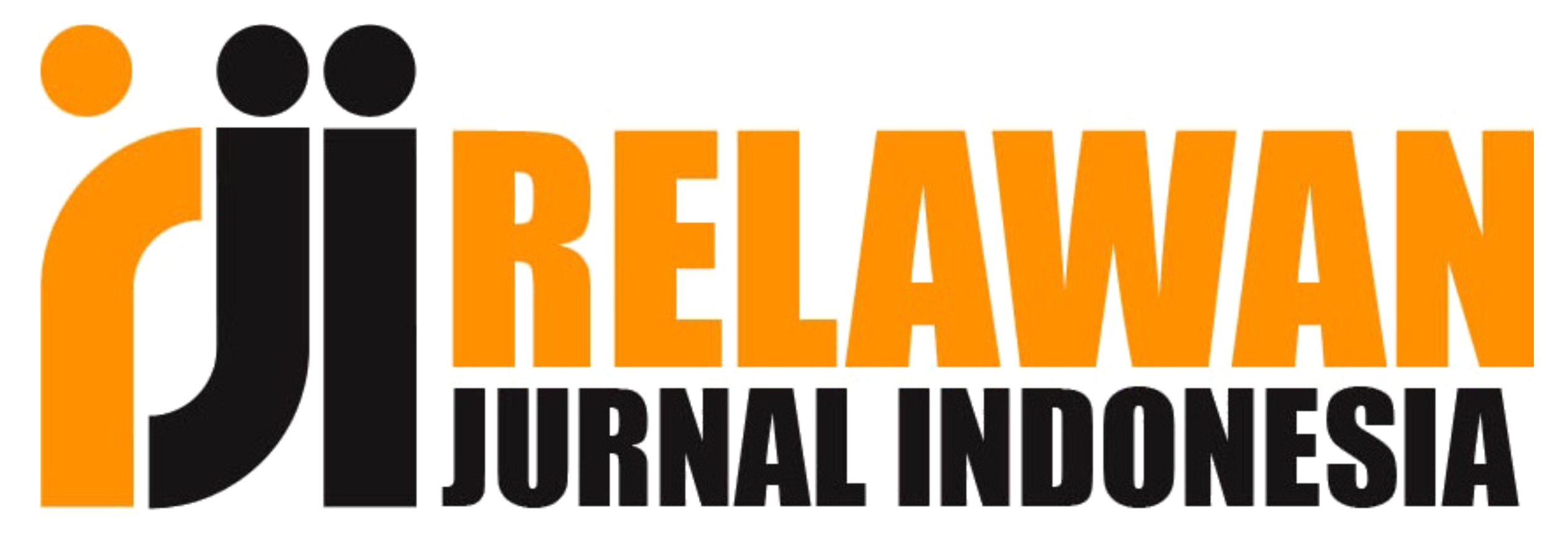Eksplorasi Batik Tulis Sari Kenongo Sebagai Sumber Belajar Etnopedagogi Di Sekolah Dasar
DOI:
https://doi.org/10.61476/ewy4qy98Keywords:
batik tulis Sari Kenongo, learning resources, ethnopedagogyAbstract
Primary education plays an important role in shaping students' character, identity and love for local culture. Ethnopedagogy is an educational approach that incorporates the principles of local culture into education, emphasizing the special values of each culture and fostering students' sense of responsibility for the country's history, language and traditions. However, ethnopedagogy-based learning is still not optimally implemented in primary schools due to problems such as insufficient resources and teaching materials to integrate culture. Batik tulis Sari Kenongo is one of Sidaorjo's local cultures that can be used as an ethnopedagogical teaching tool in primary schools. This research uses descriptive qualitative research methods. Descriptive qualitative method is a research method that focuses on understanding social conditions through exposure or description and interpretation in detail, emphasizing actual conditions. Data collection techniques used to collect in-depth information from various sources were conducted through (1) interviews, (2) observations, and (3) documentation studies. The research obtained information about the history, characteristic motifs, as well as techniques and ways of making Sari Kenongo handmade batik. The results also show that Sari Kenongo batik can be included in the elementary school curriculum as an ethnopedagogy-based learning resource because Sari Kenongo batik is rich in cultural values, philosophy, and social learning. So it can be concluded that batik tulis Sari Kenongo can be utilized as an ethnopedagogy-based resource to instill cultural values in students from an early age, by linking to subject matter such as fine arts, science, social science, or mathematics.
Downloads
References
Ahda, Yunia, Sekar, Fardhani., Alaika, Sugih, Katresna. (2024). Creation of Contemporary Batik with Brush Stroke Motifs Using Layering Technique. Mudra, 39(3):282-292. doi: 10.31091/mudra.v39i3.2745
Cissé, A., & Rasmussen, A. (2022). Qualitative Methods. Comprehensive Clinical Psychology, Second Edition, 3, 91–103. https://doi.org/10.1016/B978-0-12-818697-8.00216-8
Dafit, F., Ramadan, Z. H., Nuramalina, N., & Yogi, A. (2023). NEED ANALYSIS OF ETHNOPEDAGOGY-BASED THEMATIC LEARNING MODULES DEVELOPMENT FOR GRADE V ELEMENTARY SCHOOL STUDENTS IN PEKANBARU. Primary: Jurnal Pendidikan Guru Sekolah Dasar. https://doi.org/10.33578/jpfkip.v12i1.9359
Fristia, V. F., & Navastara, A. M. (2014). Faktor Penyebab Belum Berkembangnya Industri Kecil Batik Desa Kenongo Kecamatan Tulangan-Sidoarjo. Jurnal Teknik Pomits.
Haikal, M. F., Faldi, R., Firman, M., Noriska Salim, M. R., Permana, A., & Mustaqim. (2023). Perlindungan Kekayaan Intelektual Batik Tradisional Dalam Perspektif Hukum. Indonesian Journal of Law and Justice. https://doi.org/10.47134/ijlj.v1i1.2009
Kurniawan, E. Y. (2023). Batik: nilai-nilai pendidikan dalam kegiatan membatik di sekolah dasar. Indonesian Journal of Elementary Education, 5(1), 41–41. https://doi.org/10.31000/IJOEE.V5I1.9079
Lee, Y. S. (2024). Qualitative and mixed methods. Translational Orthopedics, 229–232. https://doi.org/10.1016/B978-0-323-85663-8.00010-6
Nazala, Aprian, Zahrika., Eka, Titi, Andaryani. (2023). Kurikulum Berbasis Budaya untuk Sekolah Dasar: Menyelaraskan Pendidikan dengan Identitas Lokal. Pedagogika, 3(2):163-169. doi: 10.57251/ped.v3i2.1124
Negrilă, I. (2023). Ethnopedagogy as Axiological Resource of Education / Etnopedagogia ca resursă axiologică a educației. Tehnologii Informatice Și de Comunicație În Domeniul Muzical / Information and Communication Technologies in Musical Field, 14(2), 29–34. https://doi.org/10.47809/ICTMF.2023.02.03
Oktafiah Y, Dwi Budiarti, & Dwita Laksmita Rachmawati. (2023). Memelihara kearifan lokal melalui wastra nusantara. J-ABDI: Jurnal Pengabdian Kepada Masyarakat, 3(3), 543–548. https://doi.org/10.53625/JABDI.V3I3.6272
Pendidikan Sejarah, J. (2018). BATIK TULIS SARI KENONGO TAHUN 1997-2017 ELSA MEILANI. Journal Pendidikan Sejarah, 6(3). www.pressreader.
Putry, D. R., Priyono, D., & Legowo, W. W. (2022). MOTIF BATIK POLITEKNIK HARAPAN BERSAMA DAN PEMAKNAANNYA SEBAGAI REPRESENTASI DAERAH TEGAL. PARAVISUAL : Jurnal Desain Komunikasi Visual Dan Multimedia. https://doi.org/10.30591/paravisual.v2i3.3597
Rico, Muhammad & Dewicca Fatma Nadilla. (2024). The Meaning of Studying Batik Art to Create Character Education in Cultural History. The Journal of History and Social Sciences, 3(1), 41–50. https://doi.org/10.58355/HISTORICAL.V3I1.104
Rif'ah, Dwi, Astuti., Andi, Setiawan., Bagus, Yunianto, Wibowo., Sri, Wahyuni., Saptianing, Saptianing., Endang, Sulistiyani., Destine, Fajar, Wiedayanti., N., Muhamadin. (2024). The Iconic Brand Love of Batik through Creativity Incubation to Nurul Islami Semarang High School Students. doi: 10.55927/ajcs.v3i7.10388
Rijali, A. (2019). ANALISIS DATA KUALITATIF. Alhadharah: Jurnal Ilmu Dakwah. https://doi.org/10.18592/alhadharah.v17i33.2374
Ruswaji, R., Sulaeman, M. M., & Febrian A., B. (2021). DEVELOPMENT AND INNOVATION OF SENDANG BATIK DESIGN AND MOTIVATION DURING THE NEW NORMAL TIME WITH SIWALAN LEAF AND FRUIT MOTIF. JHSS (JOURNAL OF HUMANITIES AND SOCIAL STUDIES). https://doi.org/10.33751/jhss.v5i3.4212
Sakti, S. A., Endraswara, S., & Rohman, A. (2024). Integrating Local Cultural Values into Early Childhood Education to Promote Character Building. International Journal of Learning, Teaching and Educational Research, 23(7), 84–101. https://doi.org/10.26803/IJLTER.23.7.5
Sarkanbaeva, G., & Aitzhanova, S. (2024). The Model of Ethnopedagogical Training of Students of a Pedagogical University. Бюллетень Науки и Практики, 10(6), 551–556. https://doi.org/10.33619/2414-2948/103/63
Sholikha, S. M., & Dewi, R. M. (2014). Peranan Usaha Kecil Menengah Batik Sari Kenongo Dalam Menyerap Tenaga Kerja Wanita Dan Meningkatkan Pendapatan Masyarakat Di Desa Kepatihan Kecamatan Tulangan Kabupaten Sidoarjo. Jurnal Pendidikan Ekonomi (JUPE).
Sudarwanto, A., Indrayana, B., & Wasi Darmojo, K. (2022). Bermain dengan Batik sebagai Media Pembelajaran Mulok pada Siswa Sekolah Dasar. Abdi Seni. https://doi.org/10.33153/abdiseni.v13i2.4410
Sudikan, S. Y., & Istiq’faroh, N. (2023, January). Trends in Local Wisdom-Based Learning Research: Bibliometrics Using Scopus Data from 2016 to 2022. In Unima International Conference on Social Sciences and Humanities (UNICSSH 2022) (pp. 1316-1326). Atlantis Press.
Suryanti, S., Mariana, N., Yermiandhoko, Y., & Widodo, W. (2020). Local wisdom-based teaching material for enhancing primary students’ scientific literacy skill. Jurnal Prima Edukasia, 8(1), 96–105. https://doi.org/10.21831/JPE.V8I1.32898
Trixie, A.A. (2020). Filosofi Motif Batik Sebagai Identitas Bangsa Indonesia (The Philosophy of Batik Motifs as the Identity of the Indonesian Nation). Journal of Design and Creative Industry.
Ulum, R. (2023). Kajian Sumber Ide dan Makna Simbolis dari Motif Batik “Masjid Agung Demak dan Ornamennya.” Syntax Idea, 5(10), 1647–1654. https://doi.org/10.46799/SYNTAX-IDEA.V5I10.2498
Utami, N. W., Sayuti, S. A., & Jailani, J. (2021). Indigenous artifacts from remote areas, used to design a lesson plan for preservice math teachers regarding sustainable education. Heliyon. https://doi.org/10.1016/j.heliyon.2021.e06417
Yuliarma, Y., & Yuliarma, Y. (2023). Philosophical Meaning of Pariangan Batik Motifs as an Effort to Preserve Minangkabau Culture. Gondang: Jurnal Seni Dan Budaya. https://doi.org/10.24114/gondang.v7i2.49639
Published
Issue
Section
License
Copyright (c) 2024 Ratna Sulistriyaniva, Wahono Widodo, Nurul Istiq’faroh (Author)

This work is licensed under a Creative Commons Attribution-ShareAlike 4.0 International License.














